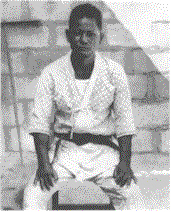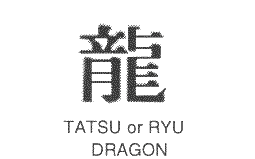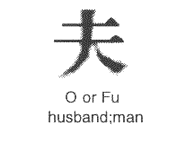Shimabuku
Isshinryu
DRAGON MAN
"All things in the universe will change."
Shimabuku Tatsuo Sensei, founder of Isshin-ryu Karate and Kobudo
by A.J. Advincula (1997)
In 1908 a great earthquake shook southern Italy and Sicily killing 150,000 but in the same year Tatsuo Shimabukuro, the founder of Isshin-ryu karate/kobudo was born. Why you ask would one start off a sentence with a tragic event such as a deadly earthquake and end it with a happy event as a birth! Because it is fact and Sensei Shimabuku which he liked to be called instead of Shimabukuro always said," There is good and bad in the universe and we should adapt to all situations." This he got from the Kenpo gokui or Secrets of Kenpo better known to those in Isshin-ryu as the Code of karate which came from the Bubishi a book which came from Fujian ,China and is associated with Okinawan karate.
Shimabuku was born in Chan village now called Kinaka in Gushikawa City on September 19,1908. He was given a girls name as was the custom adopted by the Okinawan's from the Chinese to fool the malevolence spirits lurking about who would try to harm the new born baby. It was thought that the ill willed spirits would look for a girl baby only and not harm the the boy baby.
Only after they fooled the evil spirits would they have given the baby the Okinawan name Kana and the Japanese name Shinkichi. Shinkichi is the name found on Shimabuku's koseki or family register and was also on his passport when he visited the United States in 1964 and 1966.
Prior to the Japanese making Okinawa a Japanese prefecture in 1879, and later passing laws abolishing certain kanji or Chinese characters for names used by Okinawan's to name their children, Okinawan names where given to new borns. The reason the Japanese did this was to subject the Okinawan's into being Japanese and stop them from using Okinawan customs . The Okinawan's were forced to cut their topknots which they were allowed to wear when they interred manhood and were also told not to speak Okinawan hogen or dialect but to only speak Japanese. Still Okinawan's gave their children Okinawan names although they couldn't put them on their koseki.
Kana first studied martial arts from this uncle on his mother's side Ganeku. Ganeku also taught the young Shimabuku to be a sanjinsoo,a practitioner who engages in fortunetelling, divining, and geomancy and deriving their knowledge from books rather than from the supernatural. The I Ching and kuyumi or lunar almanac besides other books on occult lore are some of the books the young Kana would have to learn. These ancient books would have been written in kanji and he would have to learn how to read the Chinese characters.
Ganeku thought he did not have enough martial arts knowledge so he sent Shimabuku to study karate from Chotoku Kyan who lived in Kadena,. At the time, Shimabuku who was around age 23 or 24, and a poor farmer's son,walked barefooted to study with Kyan. He would stay for six hours and come back home to do his chores with the farm. He studied Shuri te with Kyan for four years. Shimabuku would tell of Kyan practising chinto kata on a bridge and said chinto kata was good for that purpose.
Shimabuku studies Naha te from Chojun Miyagi around 1936. Again he walks but this time a much further distance to Naha. This time he stays with Miyagi for three years. Miyagi was known for his gripping techniques and Shimabuku put a gripping technique into his own kata sunsu.
In 1938 at age 30 he studies with Choki Motobu again in Naha for one year. Motobu was known for his fighting ability and Shimabuku always told a story about Motobu peeking through a fence to learn naifanchi kata. The reason for this was to show it wasn't the amount of kata one knows but how will one know it.
In 1939 Shimabuku goes to the Philippines and stays for two years leaving for Osaka before the war begins in 1941. In Osaka he becomes a bucho or general supervisor and stays until around 1944 when he returns to Okinawa to take his family to Kyushu, Japan to protect them from the war. While in Japan, Shimabuku works as a farmer.
One year after the war, he brings his family back to Okinawa. At age 39, in 1947, Shimabuku begins teaching karate at different locations. At first he calls his karate Chan migwa karate after Chotoku Kyan's nickname. He also takes the name Tatsuo meaning dragon man at this time.
Around 1951 he was calling his karate Sun nu su karate after his nickname he received from the mayor of Chan when Shimabuku worked as a tax collector a few years before. The mayor named him after a dance that Shimabuku's relative had made called Sun nu su. Sun nu su means son of old man. He later shortens it to Sunsu.
On January 15,1956, Tatsuo holds a meeting and names his style of karate Isshin-ryu karate. Eiko Kaneshi his right hand man said,"Why Isshin-ryu,why such a funny name," and Tatsuo replied, " Because all things begin with one."
Much of what most Americans know about Sensei Shimabuku has been passed down to them by those who studied with him on Okinawa. Most of these Americans were marines with a few navy, army and one airforce serviceman. The majority of them studied on one tour of duty with a tour being less than eighteen months. None got to know him very well but some came back and stated they were his top student, number one student, senior student, or best student and one claims to have been Okinawan champion as a white belt beating all of Okinawa's black belts. Many times I'm asked if such things happened or whats do you remember.
Each of us remember his own story but every since I've started I've been taking notes,photos, recording,filming, and now video taping all interviews.
Many told stories or tales that never happened. Others exaggerated and told unbelievable feats for example; I heard that one person stated that he saw Tatsuo drink boiling hot tea from a tea kettle. Another high ranking person who was never on Okinawa says he personally saw Shimabuku climb upside down up a flagpole at or near the dojo . The thing that's wrong with the first story is its not believable, and the second story about the flagpole that makes it made up is that there was no flagpole.
Known facts are that Tatsuo could drive a 16 penny common nail into a 2x4 with the edge of his hand and with the heel of his foot. I've observed both these feats. Sheisho Tokumine who started with Tatsuo in 1951 says he saw Tatsuo chop the tops off of the neck of a glass bottle, and saw him climb up a telephone pole head first near Agena dojo and come down the other side head first. Art Smiley who started in 1956 said he also saw Tatsuo climb a telephone pole in Agena and said he filmed it.
Tatsuo always said the reason for being able to do these feats was that he was in good physical shape. The training he did to drive a nail through a 2x4, was to hit the edge of his hand on the edge of a tapered 2x4 for about twenty to thirty minutes each day.
Tatsuo was an innovator and not a perfectionist. He believed in being natural and spontaneous. This is one of the reasons that he rarely did his kata exactly the same way each time. He also believed in change and being a sumuchi another name for a fortune teller that uses ancient books from China to tell fortunes shows he was well versed in the I Ching. The Ching is The book of change. Tatsuo while explaining the 5th verse of the Kenpo gokui said." All things in the universe will change, and you must accept and go with change." This is only one of his interpretations of this code.
He always stated not to be rigid in body or in life. He said to go with the times and be happy and joke for he liked to joke. Major Mike (Maekawa) who started the same time Tokumine did said, "Tatsuo liked to drink sake (liquor), eat yaki soba (fried noodles) and tell jokes." Major Mike recalls that Tatsuo asked him if he thought he was good in karate and Major Mike said yes. " Get a gun," Tatsuo replied to Maekawa's answer.
Eiko Kaneshi Tatsuo's right hand man who started in 1947 said that he had studied karate from others including Shoshin Nagamine of Matsubayashi-ryu karate but no one had chinkuchi ( technique,controlled power,ki or chi ) like Tatsuo.
Tatsuo's feelings were hurt by some of the senior Masters from Naha who did not agree with his new style of karate. Once while sitting in the dojo after class several of us were sitting and drinking. Tatsuo liked to drink Awamori an Okinawan distilled alcohol made from certain type of long grain rice which comes from Southeast Asia. There were many bottles of awamori,pine juice, and beer of various sizes on the table. Others present were drinking beer or mixing the awamori with pine juice a pineapple juice. Tatsuo asked the students "Which is the best bottle?" Those who were drinking beer stated the beer bottles,others picked the largest bottles,and some chose the smaller bottles. Shimabuku said all the bottles were good. All of them served a purpose: to hold what they were intended to. " There is no best bottle," he said. What Tatsuo was saying was each had a purpose and all were good. He was relating this to karate.
Not all of the other martial arts masters disagreed with Shimabuku. He was good friends with Kane Uechi of Uechi-ryu and did demonstrations with many of the other top masters.
Isshin-ryu stems from three different styles of martial arts. As one of his interpretations of the three stars in the Isshin-ryu Megami stand for, Shorin-ryu, Goju-ryu, and Kobudo. Tatsuo said that Shorin-ryu's naihanchi was the mother, and Goju-ryu's sanchin was the father, and from this union the offspring was Isshin-ryu. At age 51,Tatsuo begins to learn Shinken Taira kobudo and incorporates it into Isshin-ryu. Prior to learning from Taira, Tatsuo taught a sai kata now known as Kyan Chotoku no sai or for short Kyan no sai. He also taught Tokumine no kun which he learned from Kyan.
Tatsuo Shimabuku in 1951 taught these following kata according to Tokumine and Major Mike: Seisan,seienchin (seiunchin), naihanchi (nahanchi shodan), wansu,chinto,kusanku,sunsu,sanchin,sai kata (kyan no sai), kusanku sai, tokumine no kun.
Around 1959-61, he adds from Taira's kobudo, chatan yara no sai, urashi kun, shishi no kun and tuifa kata (Hamahiga no tuifa).
In 1971, Tatsuo retires from teaching karate and kobudo but still gives out promotions or attends some dojo functions. His last official act in martial arts was to attend the grand opening of the Isshin-ryu Headquarters Dojo in Kinaka in April of 1975.
On May 30,1975, the dragon of Isshin-ryu died of a stroke. Some say from a broken heart. From his students, all we can say is, thank you Sensei for teaching us.
Let us in Isshin-ryu commemorate the birthday of one of the first modern karate masters who looked at change in a positive light.


Tatsuo Shimabuku seated in the
Agena dojo in 1960.
Photo: Compliments of
Sherman Harrill.

Tatsuo written in kanji is shown.
The first person to write an article
about Tatsuo and have it printed
in a major magazine was Steve
Armstrong who said Tatsuo means
dragon boy. He thought Tatsuo was
given this name at birth. All other
writers followed Armstrong without researching for themselves.
Copyright A. J. Advincula, used with permission.